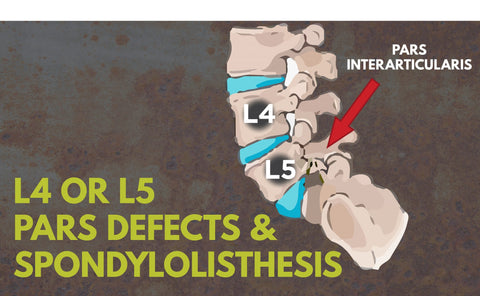What To Expect After Enduring Lumbar or Thoracic Back Surgery
There are many reasons why an individual has to undergo surgery on their back. Some back conditions can be healed through conservative treatment options such as medications, physical therapy, ice/heat therapy. But for others, their condition may have progressed or cannot be healed through those traditional methods - resulting in the need for back surgery. The most common back surgeries include:
- Spinal Fusion - Herniated discs, tumors, degenerative discs, SI joint pain
- Laminectomy - Low back spinal stenosis, spondylolisthesis
- Foraminotomy - Bone spurs, herniated discs, scar tissues
- Discectomy - Disc herniated
We understand that enduring surgery may be a scary thought, but we've made sure to answer all of your post-surgery questions to ensure a speedy recovery!
Q: How Should I Sleep After Back Surgery?
A: The best way to sleep after undergoing a lumbar, thoracic, or cervical spine surgery is on your back. You should place a towel or blanket underneath your knees to slightly bend your hips. Sleeping in a recliner chair is another great way to make sure your upper body is upright and elevated. Wearing a sleeping night brace is an easy tool to ease your comfort to help you sleep through the night.Q: Does Fixing My Posture Help Recover from Back Surgery?
A: You’ve probably heard that correcting your posture can do wonders for your health - it's true! The list of benefits of having proper posture goes on and on: good posture reduces migraines, increases oxygen intake and energy levels, promotes weight loss, and more. That’s why it’s no surprise individuals who've undergone surgery should work on having good posture while recovering. Wondering what your current posture stance is? Take our quick posture quiz to find out!
After surgery, your body is working tirelessly to recover and heal so it’s likely that having proper posture isn’t the first thing on your mind. While it may not be your first priority, it can help you reduce the amount of stress placed on your spine, which in turn, lowers your pain level. Once you’re recovering, you’ll spend a lot of your time laying/sitting in bed. It’s important not to slouch because it will lower the amount of oxygen you’ll receive. One way to make sure your body in taking the most oxygen is by wearing a posture brace to help train your muscles in the proper position.
Q: What Should I Eat Post Surgery? What Should I Avoid?
A: Your diet can play a huge part in the duration of your recovery time! Constipation is quite common post surgery but by eating the correct foods, it can be prevented. Eating a well-balanced diet helps lower the swelling and inflammation of your incision site. You should try eating the following foods to help recover from a back or spine surgery:
- Avocados
- Beans
- Artichokes
- Raspberries
- Whole Wheat Pasta
- Turkey
- Eggs
- Beans
- Fish
- Pork
- Blueberries
- Strawberries
- Cherries
- Pomegranates
- Plumes
Foods to avoid after surgery:
Dairy- Cheese
- Milk
- Butter
- Cakes
- Candy
- Cereal
- Potato Chips
Q: Does Wearing a Brace/Wrap Help After Spine Surgery?
Wearing a back support while recovering can help relieve some of that extra work normally placed on your back. Wearing a back wrap post surgery can help ease stress and tension placed on your spinal discs, muscles, and bones. At BraceAbility, we have a wide selection of post-operative braces applying light to heavy compression for every region of your back.
Q: Can I Exercise or Stretch After My Back Surgery?
A: Speak with your doctor first to decide when the best time is to start easing into being active. With your specific condition, you may be able to start light physical activity such as walking in the first days after your procedure. Whereas other more severe surgeries, it may be weeks until you’re able to fully move around.
Here are 6 of the best light exercises/stretches for those recovering from either a lower or upper back surgery:
Lower Back After Surgery Exercises:
- Light Wall Slides: Start by standing with your back against the wall with your feet about a foot in front. Slowly bend both knees, lowering your upper body. Hold this position, then slowly rise and repeat 10 times.

- Heel Raises: While lying on your back, slowly slide your ankle towards your body, bending your knees. Slowly straighten your leg back to the ground. Repeat 10 times in both legs.

- Hamstring Stretch: While lying on your back with your legs stretched out in front of you. Place your hands behind your thigh and slowly straighten your knee until you feel a slight stretch. Hold this position for 10-20 seconds then repeat with the other leg.

Upper/Thoracic Back Post Surgery Exercises:
- Butterfly: While sitting or standing, place your hands on your shoulders with your palms facing down. Keep your hands in that position and bring your elbows together (or as close as you’re able to). Hold this position for 10 seconds then repeat.

- Cat/Cow Stretch: Start by getting on all fours on the floor (you may want a mat or carpet to prevent hurting your knees). Spread your knees hip-length apart with both palms directly below your shoulder. When you exhale, arch your back in the middle while also lowering your head and tailbone. When you inhale, lower your middle back while raising your head and tailbone. Repeat this as many times as comfortable.

- Cobra: While laying face down on a mat or carpet, with the top of your feet placed on the ground and hand beneath your shoulder with elbows tucked on the side. When inhaling, push up with your arms so your head and chest lift off of the ground. Make sure to keep your waist and pubic bone placed against the ground. Hold this position for 20 seconds then repeat five times.











